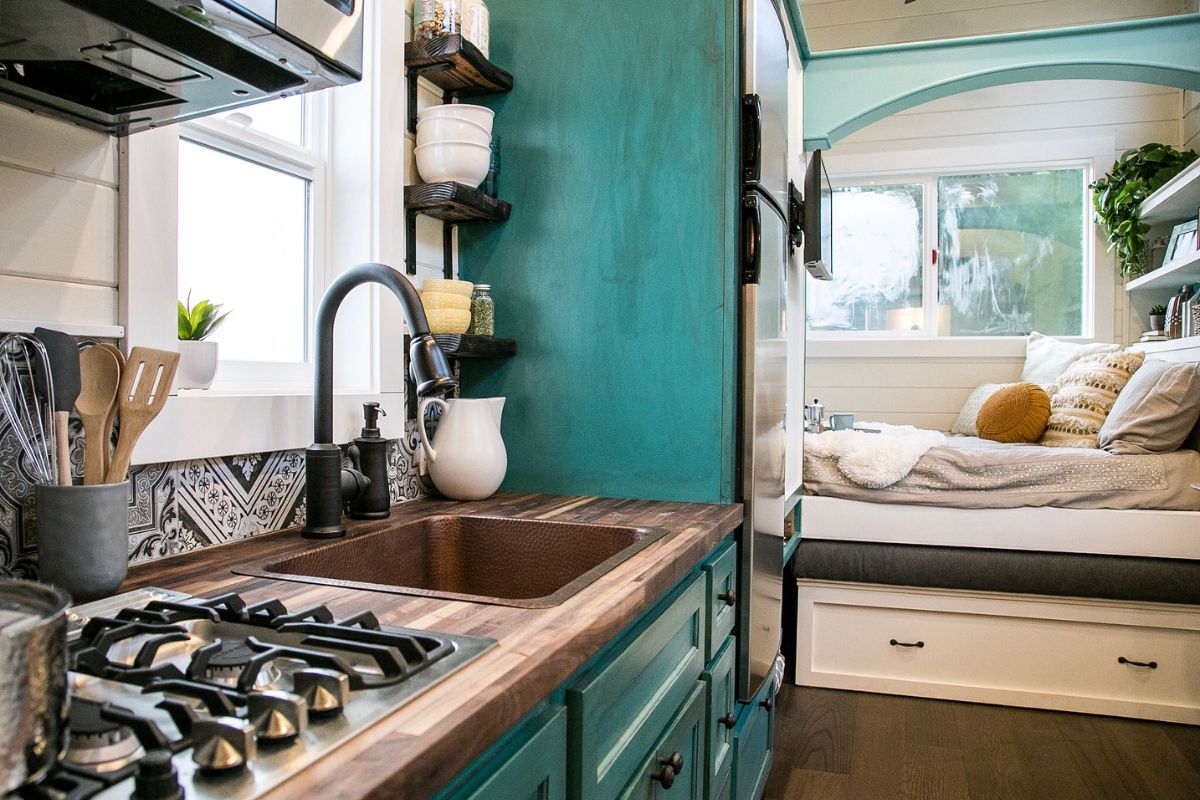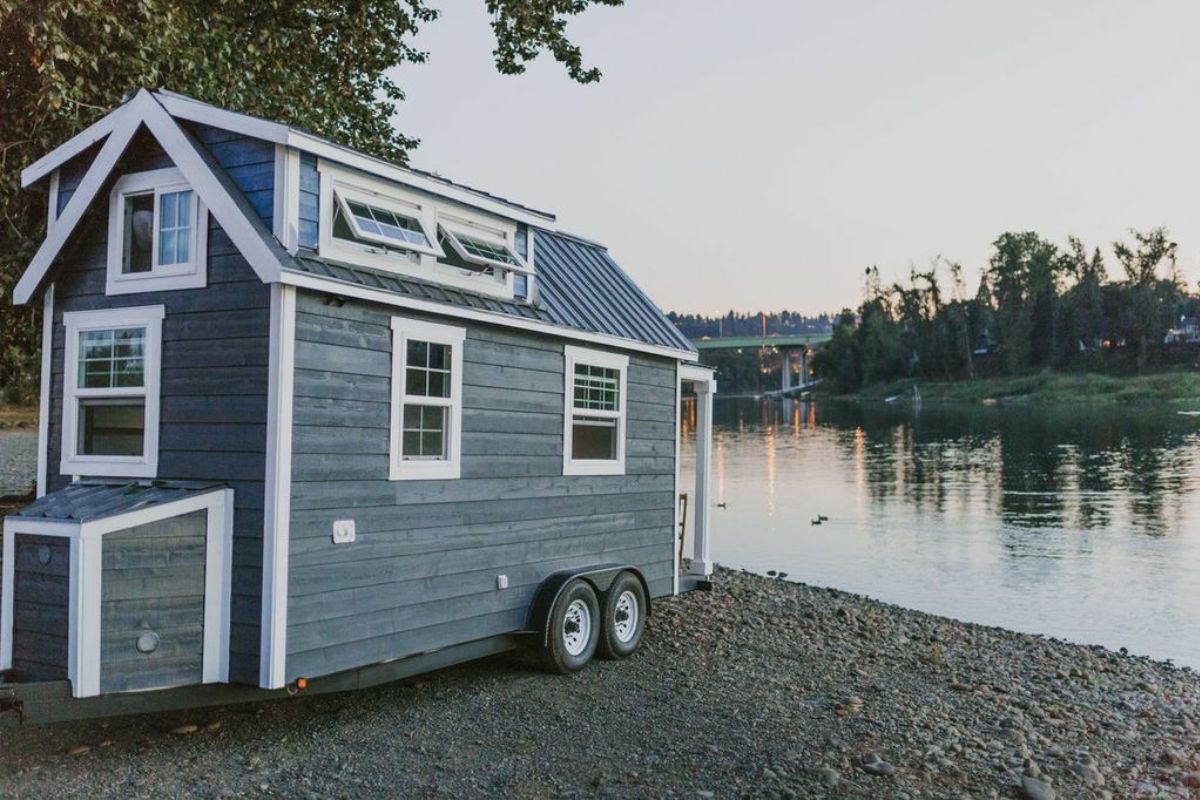Tiny homes offer a way to live with focus, comfort, and smart planning. Many owners want tools that support daily life without creating clutter or stress. Automation helps a compact space feel smoother, quieter, and easier to manage. The right setup brings structure to lighting, temperature control, energy flow, entertainment, and security. A clear approach gives your home a calm rhythm that matches your lifestyle.
Small spaces react quickly to changes in light, temperature, airflow, and noise. Automation gives you control with simple commands instead of constant manual adjustments. Tiny home owners benefit from this trend since compact spaces gain major advantages from smart tools.
Understanding the Needs of a Tiny Home
A tiny home requires careful thought before you pick devices. You achieve the best results when you understand your routines. Morning habits, evening patterns, cooking schedules, and work sessions reveal gaps that smart tools can fill.
The layout shapes every decision. A lofted bed, narrow kitchen, multipurpose table, or compact bathroom changes how you place lights, sensors, screens, and switches. Each device must fit into the structure without blocking movement or storage.
Energy matters in a tiny home. Many owners rely on solar panels, battery banks, or modest electrical hookups. Smart energy tools track use in real time and help prevent sudden drops in power. Planning keeps your systems steady and predictable.
Choosing the Right Ecosystem and Hub
A smart home works smoothly when every device connects through one central system. This structure prevents confusion and helps your tools respond quickly. Voice assistants and mobile apps become simple control points that fit naturally into your routine. Homeowners often look at long-term budgets while comparing platforms since smart home costs vary. Device prices, subscription features, and compatibility rules play a major role in choosing an ecosystem. A strong platform supports lighting, speakers, locks, sensors, and thermostats through one interface.
Voice control improves daily life in a tiny home. You can adjust lights or climate settings while cooking or cleaning. App control gives you remote access when you leave home. A stable hub makes every tool dependable and easy to manage.

Designing a Smart Lighting Plan for Small Spaces
Lighting shapes the mood of a tiny home. A compact layout needs layers of light that adapt to reading, cooking, relaxing, or working. Smart bulbs and switches help you adjust brightness and color tone throughout the day.
Strategic placement prevents harsh shadows. Under-cabinet lights brighten surfaces without crowding your counter. Accent lighting adds calm during quiet evenings. Dimmable bulbs give you more flexibility with minimal effort.
Scenes help your home flow smoothly. A morning scene brightens the living area as you wake. A night scene softens the space and prepares you for rest. These gentle transitions create comfort without manual changes.
Improving Climate Control for Daily Comfort
Tiny homes heat and cool quickly. Smart thermostats keep the indoor temperature steady with accurate adjustments. This gives you comfort during hot afternoons, cold mornings, or long nights.
Lofted sleeping areas often trap warm air. A system with multiple sensors creates a more balanced environment. Your thermostat responds to actual conditions in each part of the home.
Scheduling helps you maintain comfort with little effort. Warm your space before you wake, cool it before bedtime, and adjust it during work periods. These automated routines support a steady rhythm.
Managing Energy Use With Smart Tools
Energy management plays a major role in tiny home living. Smart plugs, switches, and meters reveal how much power each device uses. This gives you insight into habits that raise or lower your energy load.
Solar-powered homes gain clear advantages from detailed tracking. You can shift certain tasks to bright daylight hours. Cooking, charging devices, or running appliances feel more manageable when you know how much energy flows through your system.
Battery storage requires planning. Smart cutoffs protect your reserves by powering down noncritical devices during low-charge periods. This process prevents unexpected outages.
Strengthening Security for Peace of Mind
A tiny home needs strong security tools, especially when placed in remote or semi-private areas. Smart locks, cameras, and sensors work together to protect your space.
Many tiny homes follow open layouts. One indoor camera often covers the living area, kitchen, loft, and entryway. This gives you clear awareness when you leave or travel.
Smart locks help you manage access with ease. Temporary codes work well for trusted guests. Motion lights near the entry discourage unwanted attention and create a safer perimeter.

Building Scenes That Support Daily Life
Scenes combine several tasks into one command. A morning scene might turn on warm lights, adjust the temperature, and start soft music. An evening scene might dim the lights, lower the temperature, and lock the doors.
Scenes help you move through a small space with fewer steps. Narrow walkways, loft ladders, or tight corners become less of a challenge when tools respond with one quick prompt.
Simple scenes work best. Three or four actions feel natural and prevent confusion. A steady routine emerges without strain.
Creating a Smart Entertainment Setup That Fits
Entertainment systems must stay compact in a tiny home. Smart speakers, compact projectors, and wireless screens offer high-quality performance in small spaces. Shelves and wall mounts give you room to place these tools without crowding your living area.
A projector creates a large viewing surface on a blank wall. Smart speakers double as music sources and control hubs. Wireless connections help you avoid tangled cables.
Workspace comfort depends on sound, lighting, and layout. Smart lights shift color tone during focused work periods and adjust again when you relax. This helps your home adapt to both productivity and leisure.
Enhancing Kitchen and Bathroom Functions
Smart tools improve kitchens and bathrooms without consuming space. Water leak sensors protect your home from unexpected drips. Early detection makes a large difference in tiny areas where water can spread fast.
Smart faucets give you a steady flow and precise temperature control. Compact induction cooktops heat quickly and pair well with recipe screens. This creates a tidy and efficient cooking environment.
Maintenance reminders help you stay ahead of repairs. Alerts for air filters, humidity levels, or appliance cycles keep your home in good condition without manual tracking.
A thoughtful automation system improves life in a tiny home through comfort, control, and smooth routines. Smart lighting, climate tools, energy tracking, entertainment devices, and security features come together to support your day without adding stress. A clear plan helps your home feel balanced, efficient, and ready to adapt as your needs evolve.





Share: